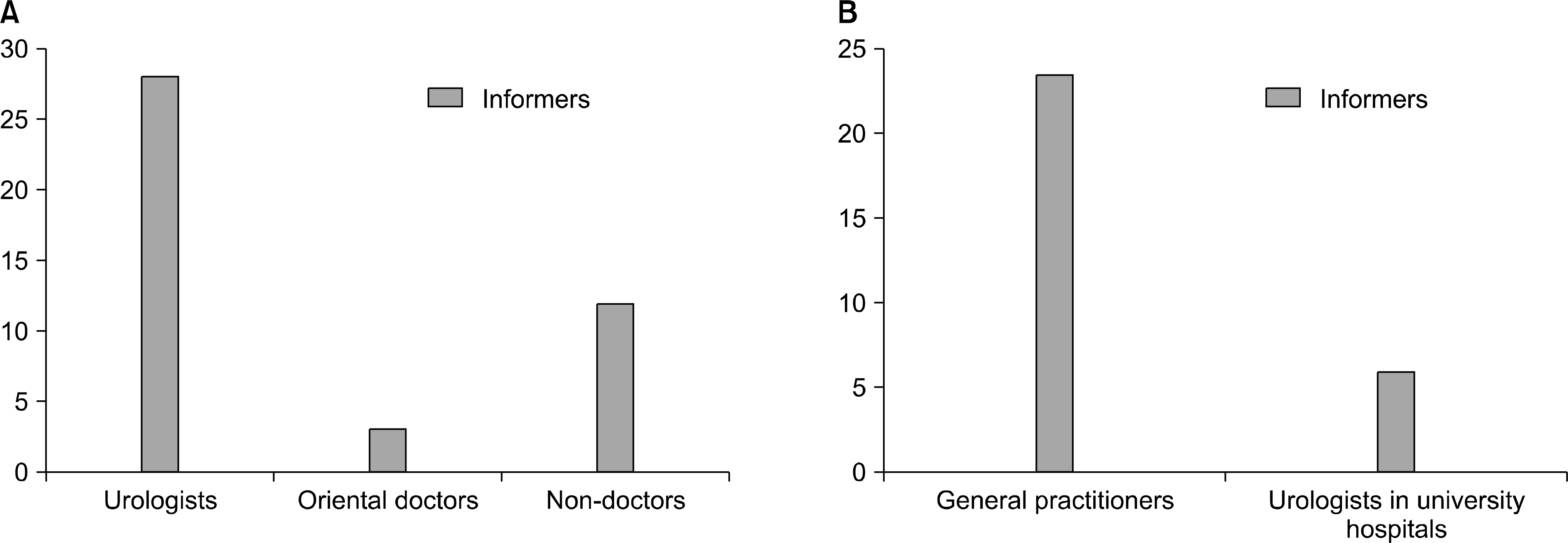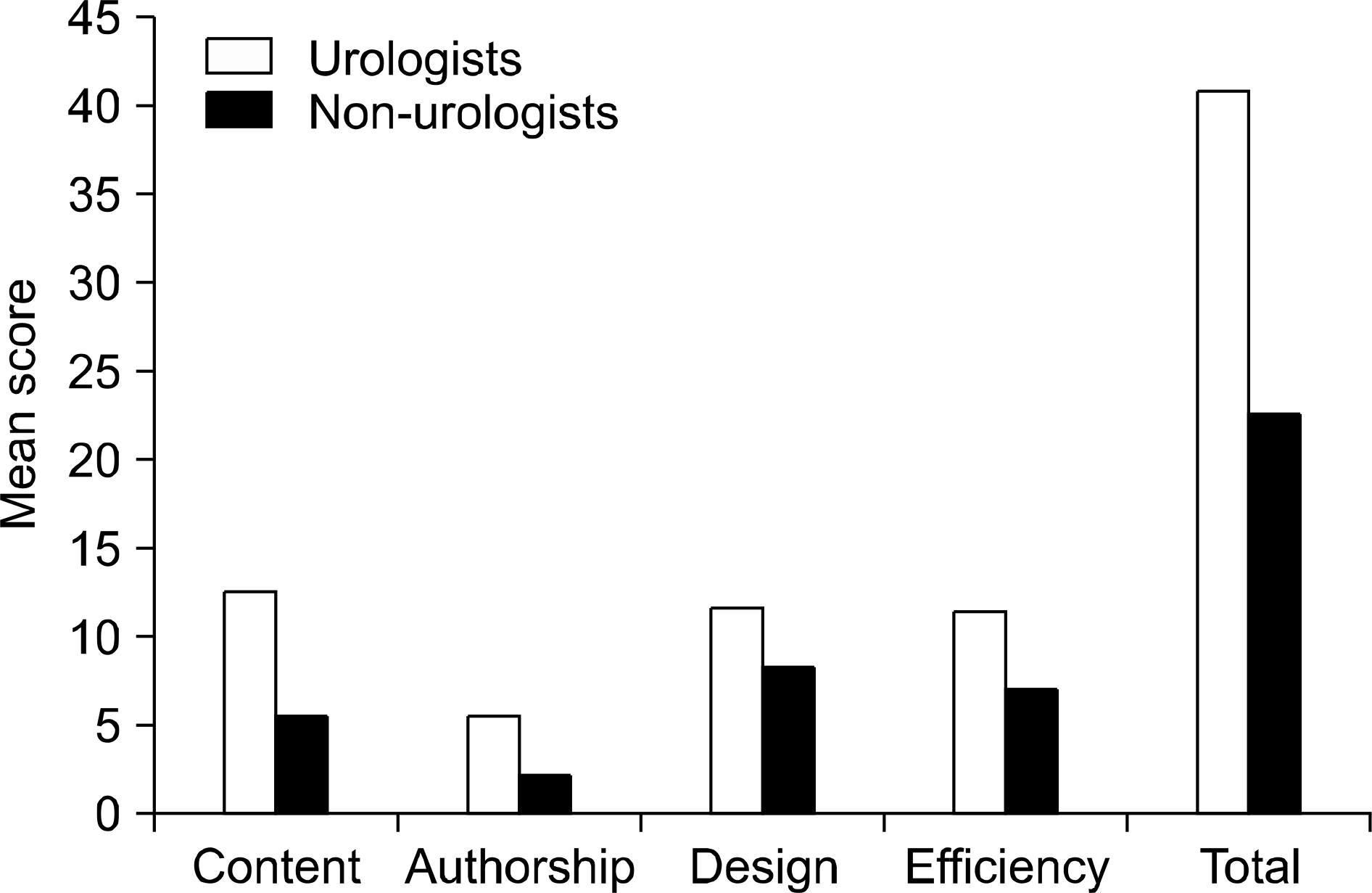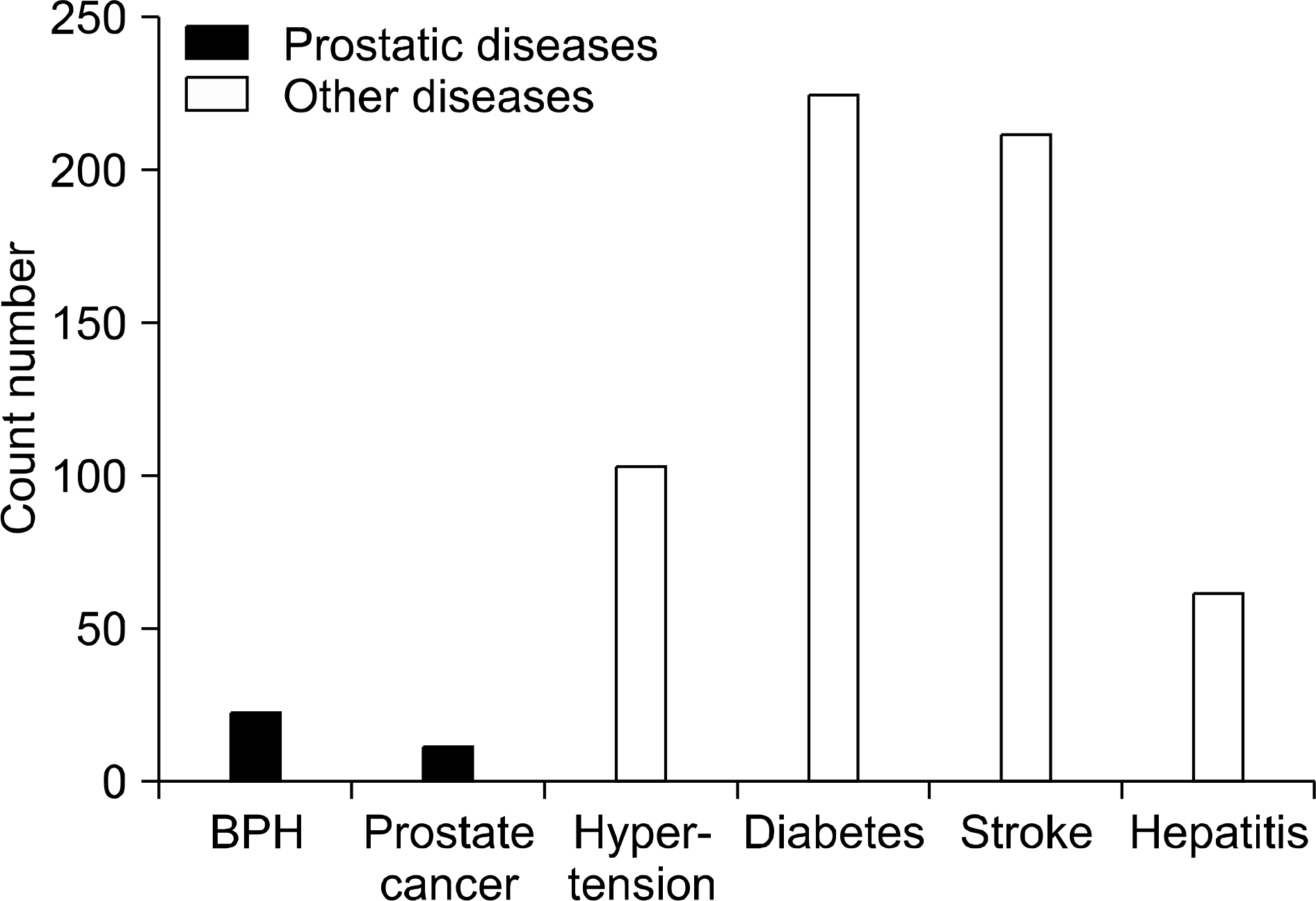Abstract
Purpose
We assessed the quality of information available to patients on benign prostatic hyperplasia (BPH) and prostate cancer on the Korean internet web sites.
Materials and Methods
This research was undertaken by surfing the internet on the world wide web sites, including naver, nate, daum, yahoo and empas. The key words for the search were ‘BPH’ and ‘prostate cancer’. We evaluated two main themes, and these were aspect of the contents and the technical contents. The aspects of the contents were the content and authorship, and the technical aspects were related to design and efficiency.
Results
We evaluated 45 web sites that focused on BPH and 24 web sites that focused on prostate cancer. From among the web sites, 27 (60%) of the 45 BPH sites and 16 (67%) of the 24 sites gave medical information. Only 14 (31%) of the 27 BPH sites and 12 (50%) of the 24 prostate cancer sites dealt with full information. The average score of these 43 web sites was only 34.5±13.6 of a perfect score of 100. The mean score of the content was 10±5.1 of 40 points, authorship was 4.3±3.3 of 20 points, design was 10.4±3.3 of 20 points and efficiency was 9.8±4.6 of 20 points. A total of 28 (65%) out of the 43 providers of information were urologists and 23 (82%) out of the 28 were general practitioners. The rate of research on prostatic disease was lower than that for ‘hypertension’, ‘diabetes’, ‘stroke’ and ‘hepatitis’.
REFERENCES
1.National internet development agency of Korea. http://int.nida.or.kr/index.jsp.
2.Tatsumi H., Mitani H., Haruki Y., Ogushi Y. Internet medical usage in Japan: current situation and issues. J Med Internet Res. 2001. 3:E12.

3.Korea network information center. http://www.nic.or.kr.
4.Winker MA., Flanagin A., Chi-Lum B., White J., Andrews K., Kennett RL, et al. Guidelines for medical and health information sites on the internet: principles governing AMA web sites. American Medical Association. JAMA. 2000. 283:1600–6.
5.Sohn AR. Criteria for evaluating health information sites on the internet. J Korean Soc Health Stat. 2000. 25:97–107.
6.Park JH., Kim HJ., Joo KJ. Analysis of urology homepage using the internet. Korean J Urol. 2001. 42:1328–32.
7.Hellawell GO., Turner KJ., Le Monnier KJ., Brewster SF. Urology and the internet: an evaluation of internet use by urology patients and of information available on urological topics. BJU Int. 2000. 86:191–4.

8.Eysenbach G., Kohler C. What is the prevalance of health-related searches on the World Wide Web? Qualitative and quantitative analysis of search engine queries on the internet. AMIA Annu Symp Proc. 2003. 225–9.
9.Al-Bahrani A., Plusa S. The quality of patient-orientated internet information on colorectal cancer. Colorectal Dis. 2004. 6:323–6.

10.Steginga SK., Occhipinti S., Gardiner RA., Yaxley J., Heathcote P. Making decisions about treatment for localized prostate cancer. BJU Int. 2002. 89:255–60.

12.Mann CE. Searching for HIV/AIDS information on the World Wide Web. J Assoc Nursed AIDS Care. 1999. 10:79–81.

13.Watson R. The new patient power. Newsweek. 2001. 137:54–8.
14.Ilic D., Risbridger G., Green S. Searching the internet for information on prostate cancer screening: an assessment of quality. Urology. 2004. 64:112–6.

15.Gilliam AD., Speake WJ., Scholefield JH., Beckingham IJ. Finding the best from the rest: evaluation of the quality of patient information on the Internet. Ann R Coll Surg Engl. 2003. 85:44–6.

16.Bergman J., Konijeti R., Lerman SE. Myelomeningocele information on the internet is accessible and of variable quality, and requires a high reading level. J Urol. 2007. 177:1138–42.

17.Jadad AR., Gagliardi A. Rating health information on the internet: navigating to knowledge or to Babel? JAMA. 1998. 279:611–4.
Fig. 1.
(A) Classification of the 43 web sites' information sources. (B) Among the urologists, classification of the authors.

Fig. 2.
Comparison of the web sites' mean scores for the urologists and non-urologists. The scores of the urologists' web sites' scores are higher than that of the non-urologists web sites (p<0.01).

Fig. 3.
The number of web sites that are concerned with each disease and that appeared in the search engines. The number of web sites that are concerned with prostatic diseases are lower than that for other diseases (p<0.01).

Table 1.
Rating criteria
Table 2.
Mean score of the web sites based on the criteria listed in methods




 PDF
PDF ePub
ePub Citation
Citation Print
Print


 XML Download
XML Download